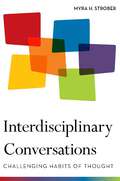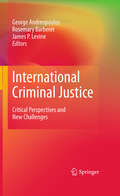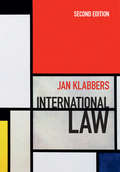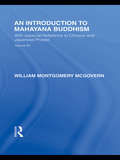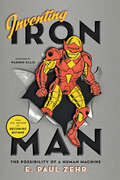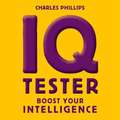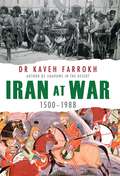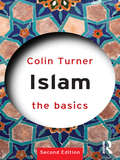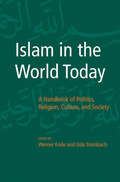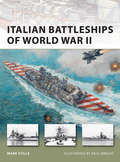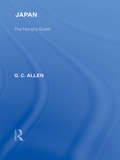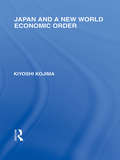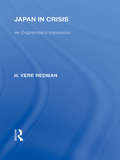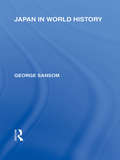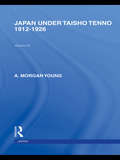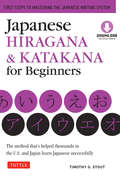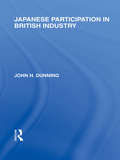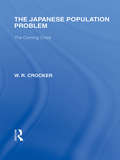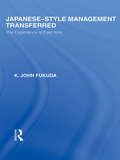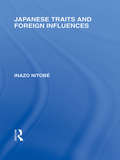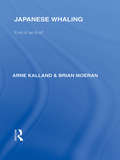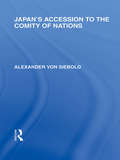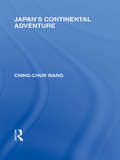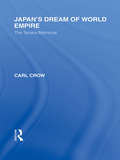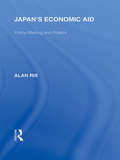- Table View
- List View
Interdisciplinary Conversations: Challenging Habits of Thought
by Myra H. StroberInterest in doing, funding, and studying interdisciplinary work has built to crescendo in recent years. But despite this growing enthusiasm, our collective understanding of the dynamics, rewards, and challenges of faculty conversations across disciplines remains murky. Through six case studies of interdisciplinary seminars for faculty, Interdisciplinary Conversations investigates pivotal interdisciplinary conversations and analyzes the factors that make them work. Past discussions about barriers to interdisciplinary collaborations fixate on funding, the academic reward system, and the difficulties of evaluating research from multiple fields. This book uncovers barriers that are hidden: disciplinary habits of mind, disciplinary cultures, and interpersonal dynamics. Once uncovered, these barriers can be broken down by faculty members and administrators. While clarion calls for interdisciplinarity rise in chorus, this book lays out a clear vision of how to realize the creative potential of interdisciplinary conversations.
International Criminal Justice
by Rosemary Barberet James P. Levine George AndreopoulosIn recent years, justice-related and human rights issues have figured more and more prominently on the international political agenda. This expansion of the justice space is a product of a growing demand for accountability in world politics. Whether the issue is addressing heinous crimes such as genocide, war crimes and crimes against humanity in situations of armed conflict, confronting the inability or reluctance of governments to protect their own populations, or responding to the challenges posed by transnational terrorism; the international community has witnessed the proliferation of institutions and mechanisms, as well as the dynamic interplay between domestic and international processes, in the pursuit of justice-sensitive outcomes. International and hybrid tribunals, UN-led and domestic counter-terrorist initiatives, and the use of force for human protection purposes have demarcated the space within which ethical, political, and legal debates have unfolded in the quest for a more humane world order. The contributors of International Criminal Justice: Theoretical and Legal Perspectives address some of the most important issues and debates involved in this quest, and assess the merits of contending approaches to the promotion of international justice norms. This volume will contribute to the ongoing debate on the challenges, as well as opportunities, facing the justice agenda in its effort to shape developments in an increasingly interdependent world.
International Law
by Jan KlabbersThe Finnish Yearbook of International Law aspires to honour and strengthen the Finnish tradition in international legal scholarship. Open to contributions from all over the world and from all persuasions, the Finnish Yearbook stands out as a forum for theoretically informed, high-quality publications on all aspects of public international law, including the international relations law of the European Union. The Finnish Yearbook publishes in-depth articles and shorter notes, commentaries on current developments, book reviews and relevant overviews of Finland's state practice. While firmly grounded in traditional legal scholarship, it is open for new approaches to international law and for work of an interdisciplinary nature. The Finnish Yearbook is published for the Ius Gentium Association (the Finnish Society of International Law) by Hart Publishing. Further information may be found at www. fybil. orgINDIVIDUAL CHAPTERSPlease click on the link below to purchase individual chapters from Volume 20 through Ingenta Connect:www. ingentaconnect. comSUBSCRIPTION TO SERIESTo place an annual online subscription or a print standing order through Hart Publishing please click on the link below. Please note that any customers who have a standing order for the printed volumes will now be entitled to free online access. www. hartjournals. co. uk/fyil/subs
An Introduction to Mahāyāna Buddhism: With especial Reference to Chinese and Japanese Phases (Routledge Library Editions: Japan)
by William M McGovernWilliam Montgomery McGovern’s Introduction to Mahayana Buddhism was one of the first books on Mahayana Buddhism written for a Western audience. It predates influential English language overviews of Buddhism by D. T. Suzuki, A. Watts, and W. Rahula. The author was born in New York City in 1897 and spent his latter teenage years (1914-1917) training at the Nishi Hongwanji Mahayana Buddhist monastery in Kyoto, Japan. He founded the Mahayana Association at age eighteen and edited and published the journal "Mahayanist" while completing his studies at the monastery. Introduction to Mahayana Buddhism was written as part of a thesis which secured him his Buddhist degree and an honorary ordination as a Buddhist priest. Intended as a simplified and introductory text for a lay audience, the book reflects the unique perspective of a Westerner trained in Japan at a time when Mahayana Buddhism was little known in the West. Referencing Buddhist literature, it gives a short history of Buddhism and the divergence of schools of Buddhist philosophy, introduces the four noble truths, the philosophy of Karma, the nature of Buddhahood, reincarnation and the road to nirvana, Buddhist cosmology, and psychological and philosophical elements of Buddhist teachings. Although the divisions of non Mahayana Buddhist sects and philosophy described may be considered dated, Introduction to Mahayana Buddhism remains significant for its historical value in presenting Eastern religious and philosophical thought to Westerners at a pivotal time in history.
Inventing Iron Man: The Possibility of a Human Machine
by E. Paul ZehrTony Stark has been battling bad guys and protecting innocent civilians since he first donned his mechanized armor in the 1963 debut of Iron Man in Marvel Comics. Over the years, Stark’s suit has allowed him to smash through walls, fly through the air like a human jet, control a bewildering array of weaponry by thought alone, and perform an uncountable number of other fantastic feats. The man who showed us all what it would take to become Batman probes whether science—and humankind—is up to the task of inventing a real-life Iron Man.E. Paul Zehr physically deconstructs Iron Man to find out how we could use modern-day technology to create a suit of armor similar to the one Stark made. Applying scientific principles and an incredibly creative mind to the question, Zehr looks at how Iron Man’s suit allows Stark to become a superhero. He discusses the mind-boggling and body-straining feats Iron Man performed to defeat villains like Crimson Dynamo, Iron Monger, and Whiplash and how such acts would play out in the real world. Zehr finds that science is nearing the point where a suit like Iron Man’s could be made. But superherodom is not just about technology. Zehr also discusses our own physical limitations and asks whether an extremely well-conditioned person could use Iron Man’s armor and do what he does.A scientifically sound look at brain-machine interfaces and the outer limits where neuroscience and neural plasticity meet, Inventing Iron Man is a fun comparison between comic book science fiction and modern science. If you’ve ever wondered whether you have what it takes to be the ultimate human-machine hero, then this book is for you.
IQ Tester Book: Boost Your Intelligence (Book-in-a-box Ser.)
by Charles PhillipsOnly people born clever have high IQs, right? Well no, actually. Anybody can make themselves more intelligent. We now know enough about the brain, and the way we think and interact with the world, to guarantee that if we train our brain more effectively we can become cleverer--and raise our performance in IQ tests. So, here's your chance to become more brainy! Based on the best-selling Book-in-a-Box kits, the IQ Tester book and tests will teach you about intelligence and how to build it and show you how to put the advice into practice. You can also have fun testing all your friends and family to see if you can make them more intelligent.
Iran at War: 1500-1988
by Kaveh FarrokhIran's complex, violent military history encompasses two world wars, foreign intervention, anti-government revolts, border disputes, a revolution, a war against Iraq that lasted over eight years, and its desperate quest to become a nuclear power. Following his award-winning book, Shadows in the Desert, which explored the military history of ancient Persia, in Iran at War Kaveh Farrokh turns his attention to modern Iran's wartime history. Beginning with the Safavid dynasty of the 16th and 17th centuries, he traces Iran's political and military progress to its dramatic turning point in 1979. In doing so, Farrokh demonstrates how Iran's current bellicosity on the world stage was shaped by centuries of military defeat and humiliating foreign influences from the likes of Russia and Great Britain. Including illustrations and photographs, this book provides an unparalleled investigation into the bloody history of modern Iran.
Islam: The Basics (The Basics)
by Colin TurnerNow in its second edition, Islam: The Basics provides an introduction to the Islamic faith, examining the doctrines of the religion, the practises of Muslims and the history and significance of Islam in modern contexts. Key topics covered include: the Qur'an and its teachings the life of the Prophet Muhammad gender, women and Islam Sufism and Shi’ism Islam and the western world non-Muslim approaches to Islam. With updated further reading, illustrative maps and an expanded chronology of turning points in the Islamic world, this book is essential reading for students of religious studies and all those new to the subject of Islam.
Islam in the World Today: A Handbook of Politics, Religion, Culture, and Society
Considered the most authoritative single-volume reference work on Islam in the contemporary world, the German-language Der Islam in der Gegenwart, currently in its fifth edition, offers a wealth of authoritative information on the religious, political, social, and cultural life of Islamic nations and of Islamic immigrant communities elsewhere. Now, Cornell University Press is making this invaluable resource accessible to English-language readers. More current than the latest German edition on which it is based, Islam in the World Today covers a comprehensive array of topics in concise essays by some of the world's leading experts on Islam, including:• the history of Islam from the earliest years through the twentieth century, with particular attention to Sunni and Shi'i Islam and Islamic revival movements during the last three centuries;• data on the advance of Islam along with current population statistics;• Muslim ideas on modern economics, on social order, and on attempts to modernize Islamic law (shari'a) and apply it in contemporary Muslim societies;• Islam in diaspora, especially the situation in Europe and America;• secularism, democracy, and human rights; and• women in IslamTwenty-four essays are each devoted to a specific Muslim country or a country with significant Muslim minorities, spanning Asia, Africa, the Middle East, and the former Soviet Union. Additional essays illuminate Islamic culture, exploring local traditions; the languages and dialects of Muslim peoples; and art, architecture, and literature. Detailed bibliographies and indexes ensure the book's usefulness as a reference work.
Italian Battleships of World War II
by Paul Wright Mark StilleOften overlooked as a naval power of WWII, Italy's Regia Marina was, upon the declaration of war against France, the fourth largest navy in the world. Despite its numbers, the Italian fleet was made up of largely obsolete vessels, none being equipped with radar, and had a reputation for having inadequately-trained crews. Added to these drawbacks, the Italian commanders did not enjoy the discretion of command at sea that their counterparts in the service of other nations did, being directed closely by the Supermarina (Italian Naval Headquarters). Despite these obstacles, and the heavy losses inflicted upon the fleet by the Royal Navy while in harbour at Taranto, the battleships of the Italian Navy enjoyed a good reputation for being well-designed, and served with courage and determination at Punto Stilo/Calabria, Sirte, Cape Spartivento, and Cape Matapan. Mark Stille details, with the aid of many stunning photographs, including several from the Italian Navy's own archives, the battleships of one of the forgotten navies of WWII.From the Trade Paperback edition.
Japan: The Hungry Guest
by G C AllenWritten after the outbreak of war between Japan and China but putting aside British sentiments of suspicion, dislike and a sense of competition, G C Allen bases his observations of Japanese social, political and economic life on his first-hand experience of living and working in the country for a number of years. He argues that the economic expansion of Japan was regarded as a greater threat to Britain because of Japan’s political aims and aggressive territorial expansion, but he is at pains to explain the Japanese domestic circumstances which gave rise to this situation. He also argues that the expansion of the British Empire has some parallels with Japanese expansion, without condoning Japanese methods. Overall the author emphasizes the extent to which judgments about the qualities of the Japanese people have been influenced by the political views of writers in Western countries.
Japan and a New World Economic Order (Routledge Library Editions: Japan)
by Kyoshi KojimaPresident Nixon’s new economic policy of August 1971, aggravated by the oil problem since October 1973 caused chaos and uncertainty in the international trade and currency system. There were fears of another 1930s style depression. In addition, a world food shortage and strident claims by developing countries for perpetual sovereignty over resources added another set of difficulties. This volume, written from Japan’s standpoint, suggests a new direction for the world and regional economic order. The book tackles two major issues in international economics: Firstly, traditional international trade theory aims only at static maximization in the use of world human and material resources, but, the author stresses more attention should be paid to such dynamic or developmental elements as population growth, immigration, natural resource development, improvement in transfer of technology, economies of scale, direct foreign investment and economic integration in order to create development centres or sectors in the world economy. Secondly, the author discusses how to combine a global and regional approach to economic integration.
Japan in Crisis: An Englishman's Impression (Routledge Library Editions: Japan)
by Hugh Vere Redman"...The Japanese are not so black as they are painted or so immaculate as they occasionally paint themselves." As the author’s own words suggest, this book attempts to give a balanced account of Japan during the "crisis" years of 1931-1935 which were some of the most significant in modern Japanese history. They saw an act of political expansion unique in the years following World War One, as well as an expansion of Japanese foreign trade in markets hitherto dominated by the exports of other countries. The letters re-issued here were written for both the Western and Japanese reader and as such represent an unrivalled impartial resource.
Japan in World History (Routledge Library Editions: Japan)
by George SansomIn this volume the author considers what the purpose and method of advanced Japanese studies should be. He believes that the study of Japanese history should be, not an end in itself but an integral part of world history. He discusses areas of controversy in interpretation which arise when a comparative method is used and Japanese history is examined in correlation with world history.
Japan Under Taisho Tenno: 1912-1926 (Routledge Library Editions: Japan)
by A Morgan YoungA journalist on the Japan Chronicle for eleven years this volume examines the history, economy, politics and society of Japan from just before the First World War until 1926. Japan’s relations with the West, as well as with Russia and China are also discussed.
Japanese Hiragana & Katakana for Beginners
by Timothy G. StoutThe method that's helped thousands in the U.S. and Japan learn Japanese successfully.Japanese has two basic writing systems, hiragana and katakana, in addition to the one that uses Chinese characters or Kanji. <P><P> This handy book teaches you a new mnemonics-based method to read and write the basic 92 hiragana and katakana characters.Memorable picture mnemonics help you to learn the characters by associating their shapes and sounds with combinations of images and English words already familiar to you.Clear examples and entertaining exercises offer opportunities to read, write, use and practice all 46 basic hiragana and 46 basic katakana characters, plus the remaining kana that stand for more complex sounds.Polish your knowledge with word searches, crossword puzzles, fill-in-the-blanks, timed recognition quizzes, and other interesting activities.The Downloadable Content allows you to print out your own flash cards (featuring the same mnemonic images taught in the book) to help you review and practice, even while you're on the go.
Japanese Participation in British Industry (Routledge Library Editions: Japan)
by John DunningJapanese participation in British industry has increased greatly in recent years. While the new investment is welcomed for the jobs it helps create and the injection of new technology and managerial techniques, many people are fearful lest this increased participation should lead to loss of control of British industry by British nationals and adversely affect British competitors and their struggle for global markets. These concerns are made worse by lack of knowledge about just how extensive Japanese managerial participation in British industry is and about how Japanese practices differ. This book, based on extensive original research, answers these and related questions. It is the first detailed study of the extent of Japanese participation in British industry, and of its economic impact in a number of key areas.
The Japanese Population Problem: The Coming Crisis (Routledge Library Editions: Japan)
by W R CrockerThis volume analyzes what the pressure of population growth in Japan in the early twentieth century consisted of and attempts to indicate what form it would take in the future. It examines not only the relationship between the number of inhabitants and the economic resources of the country but also discusses the structure and movement of the Japanese population, the agricultural potential of Japan, the prospects of importing food in return for exporting manufactures and the possibilities of finding relief through acquiring land further afield. The relation of all this to international affairs is stressed throughout.
Japanese-Style Management Transferred: The Experience of East Asia (Routledge Library Editions: Japan)
by K J FukudaJapan’s rapid rise to economic super-power status has led to a worldwide interest in and attempts to emulate Japanese management practices. This book, based on extensive original research, considers both the opportunities and problems of the transfer of Japanese management practices to other areas in East Asia. It remains one of the few books of its kind, as other books on Japanese management have concentrated on its transferability to the West. Because many Japanese subsidiaries have been established longer in East Asia than elsewhere and the local work forces have become accustomed to Japanese management practices when transferred elsewhere have become apparent in a way they have not where Japanese management practices are much newer.
Japanese Traits and Foreign Influences (Routledge Library Editions: Japan)
by Inazo NitobeThis volume collects together essays and lectures given by the author from 1922-1927 to a variety of international audiences. Together they illuminate essential aspects of the Japanese mentality and way of life, particularly in social, religious and linguistic aspects.
Japanese Whaling?: End of an Era (Routledge Library Editions: Japan)
by Arne Kalland Brian MoeranThis book gives a social anthropological account of whaling culture in Japan. When originally published this was the first comprehensive account in English of the history of Japanese whaling, showing how it has given rise to a particular culture. The volume discusses what happens when that culture is threatened. At the same time as explaining the work organization of those involved in whaling, the role of whaling companies in local and national economies, and the role of the whale in the establishment and maintenance of local community identity (ritual, food, gift-giving), the authors address the wider political and so-called "environmental" issues surrounding whaling in general, and Japanese whaling in particular.
Japan's Accession to the Comity of Nations (Routledge Library Editions: Japan)
by Alexander von SieboldThis volume is based upon personal observations and recollections of the author extending over six different periods of residence in Japan between 1859 and 1877. It examines how the focus of the West towards Japan changed, as Japan became a dominant force in the political arena of the Far East when it freed itself of Chinese rule and, through the Meiji restoration adopted a democratic system of government based on the West. This rapid development in the history & governance of a nation had never been seen before on such a scale and this volume therefore covers a momentous period in the history of the Japan and its role in international politics.
Japan's Continental Adventure (Routledge Library Editions: Japan)
by Ching-Chun WangThis book contains eighteen studies on various important phases of Japan’s invasion of China. The appendix contains the historical declaration by Chiang-Kai-shek setting forth clearly the reasons why China took up arms against Japanese aggression, and a lucid chapter by the veteran sinologist Owen Lattimore on what Korea pays for Japan’s rule. Ever since the invasion of Manchuria by Japan in September 1931 the writer called attention to the fact that, in view of the League commitments, aggression in the East, if not properly stopped according to the League Covenant, would encourage aggression to spread beyond the limits of Asia.
Japan's Dream of World Empire: The Tanaka Memorial (Routledge Library Editions: Japan)
by Carl CrowDescribed as the Japanese Mein Kampf, this small pamphlet outlines the history of Japan which by the late 1920s was, according to the author, becoming a dream for world domination. Although this did not come to fruition, the book nonetheless represents a fascinating insight into the national psyche and political and military planning of the Japanese in the first half of the twentieth century. It focuses particularly on the Japanese policy in Manchuria and Mongolia.
Japan's Economic Aid: Policy Making and Politics (Routledge Library Editions: Japan)
by Alan RixJapan’s arrival since World War Two as a major industrial nation has meant that she has had to bear a greater share of the developed world’s contribution to the developing nations and foreign aid has become an integral part of foreign policy. This book describes the roots of Japan’s aid policy and shows that this side of her international economic policy is based largely on domestic conditions, structures and forces. To understand the pattern of Japanese aid as it stands today, it is important to appreciate the complexities of the Japanese decision-making process. This book clearly explains the patterns of Japanese aid policy-making.
